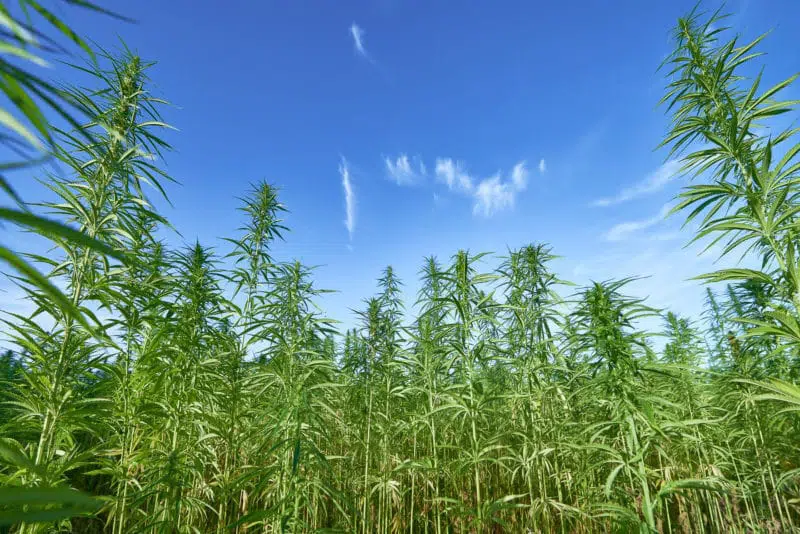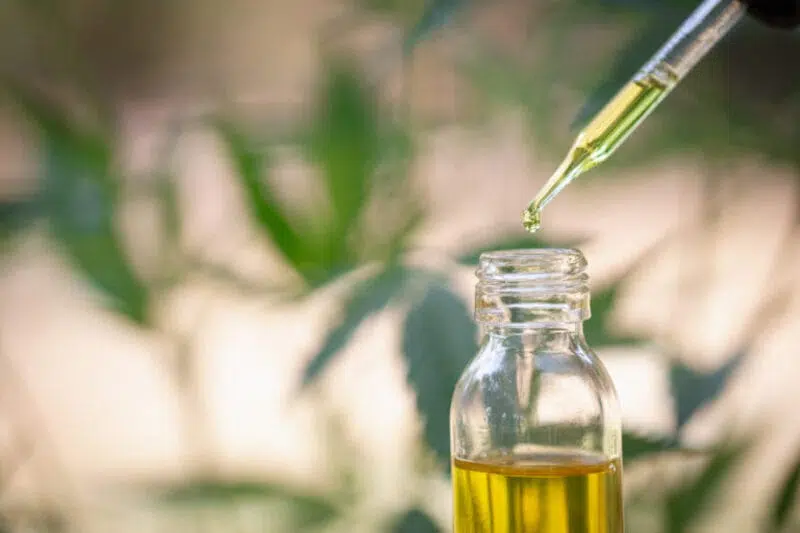-
- Market Research
- |
- CBD Near Me
- |
- Giveaways
- |
- Newsletter
- |
- Contact
- |
- Advertise
- |
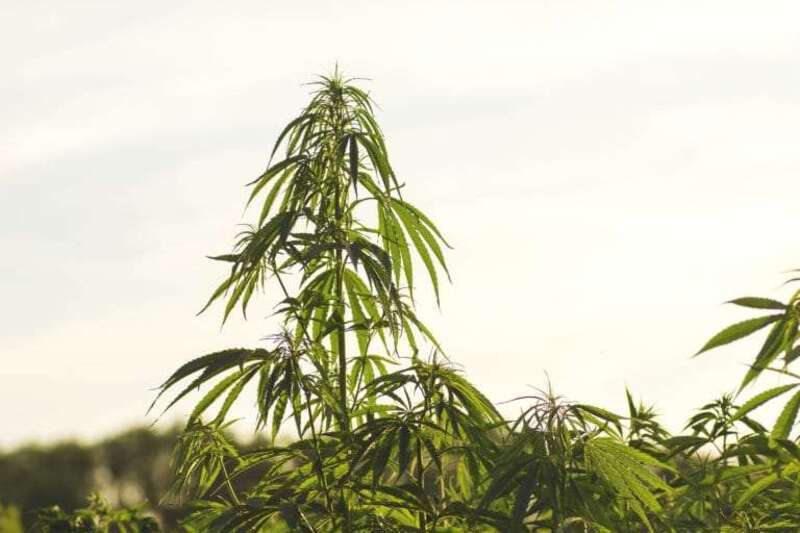
Hemp is making a triumphant resurgence. With the passage of the 2018 Farm Bill, hemp is returning to its once honorable place in American society now that it has been removed from the Controlled Substances Act (CSA). Before the CSA and the earlier Marihuana Tax Act of 1937, hemp was an agricultural commodity that proved useful in everyday items such as paper, plastic, biofuel, linens, and several more. Unfortunately, the plant’s variety of uses was never fully realized before it was banned by legislation. Today, hemp is back.
A History of Hemp in America (and Beyond)
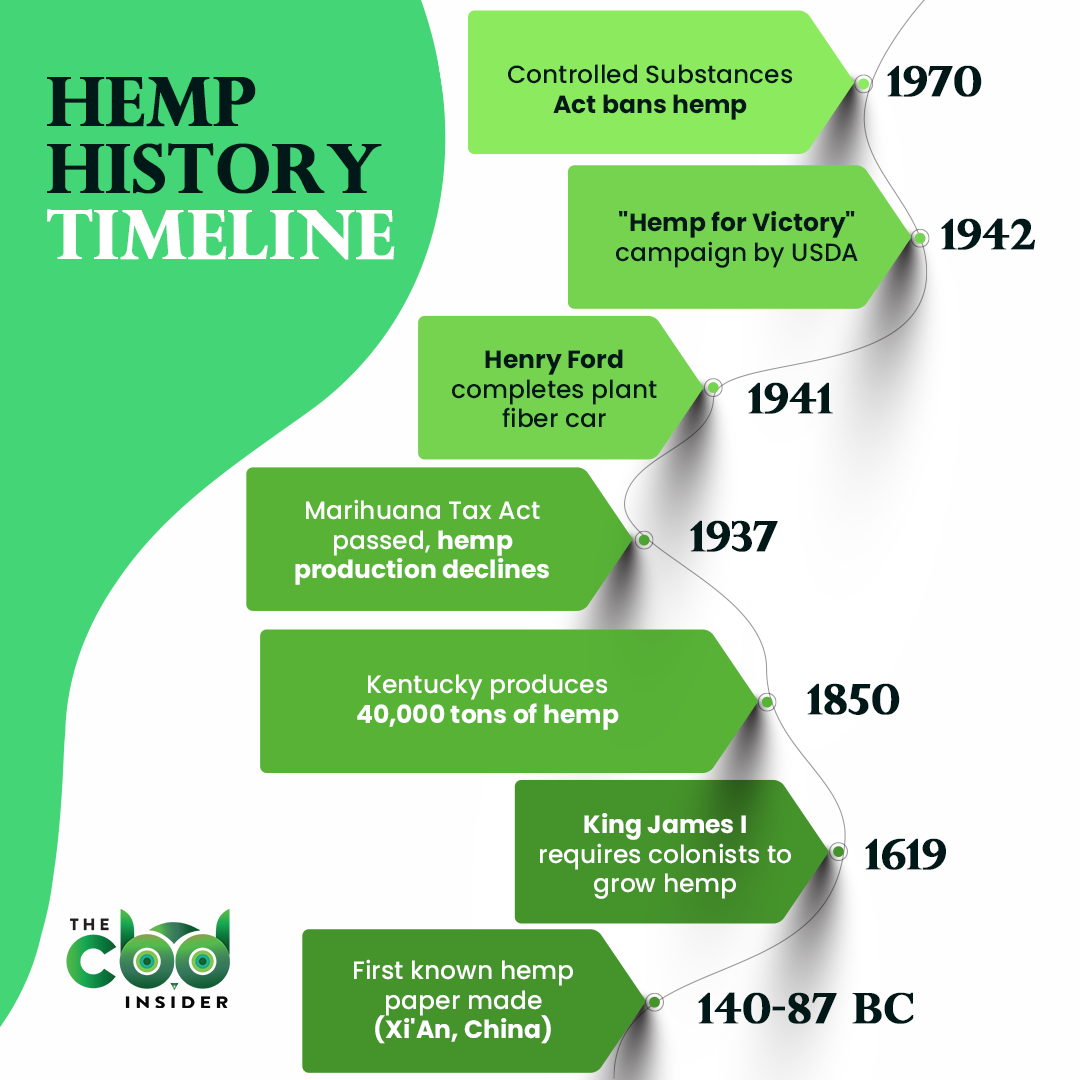
Hemp has a long and storied history in America, dating back to the colonial days where it was primarily used for textiles, rope, clothing, and twine.
In the 1600s, King James I required landowners in Jamestown to grow hemp for export to England because it was so useful.
Similar orders were given in the 17th and 18th centuries when, in an attempt to reduce the reliance on imports, both the Virginia Assembly and the British Parliament provided rewards for producing hemp.
The plant was at its peak in the 19th century when the state of Kentucky alone produced 40,000 tons of hemp in 1850, more than America produced as an entire nation in 1849 (34,871 tons).
However, hemp production came to a halt during the Civil War and never again reached the success it had previously as other fiber crops became prominent, such as cotton.
Despite the lack of wide-scale production, hemp was found to have several uses, but they were never fully realized due to the Marihuana Tax Act of 1937.
The tax act tied hemp with marijuana (whether purposefully or inadvertently is subject to debate), which made hemp unprofitable and mostly killed the industry.
The plant was brought back during World War II with the USDA’s “Hemp For Victory” campaign since hemp was useful for creating ropes, cordage, cloths, and other materials necessary for the war effort.
Hemp became essentially illegal again after the war.
Finally, in 1970, hemp was placed in Schedule I of the Controlled Substances Act, effectively prohibiting cultivation and research of the plant.
Hemp as Paper
The oldest piece of paper recovered was found in China and is believed to be from 140 – 87 B.C.
It was also made entirely from hemp fibers.
Most paper throughout history was made from rags (i.e., worn-out clothes), which were primarily comprised of hemp fiber. Thus, hemp has been used in paper for centuries.
It was not until the mid-19th century that wood pulp was used to create the paper we know of today, used for writing and printing.
In 1916, the USDA released a document on hemp’s potential for paper production versus wood-based paper.
The findings showed that hemp produces about four times more usable fiber per hectare than wood, and it contains more cellulose (the main ingredient in papermaking) than wood.
Since hemp can be grown annually with far less land and upkeep, this document indicates using hemp for paper is more advantageous than cutting down forests.
However, manufacturing wood pulp was much cheaper and the processes for creating hemp pulp too inefficient to reasonably replace wood as the primary source of paper.
Hemp in Plastic
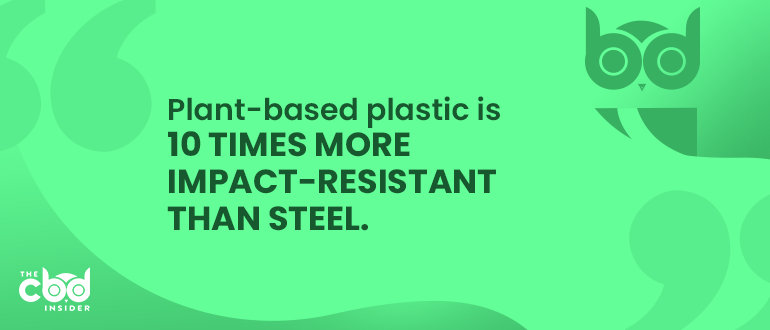
In 1941, after twelve years of research, Henry Ford unveiled the cellulose fiber automobile, made from 14 panels of plant plastic mounted on a tubular welded frame.
According to an article from the New York Times, the plastic was made from 70 percent cellulose fiber and 30 percent resin binder, and the cellulose fiber contained about 10 percent hemp.
The plant-based plastic paneling was 10 times more impact-resistant than its steel counterparts. Ford demonstrated by swinging at the plastic with an ax, which did not dent, while the steel panels showed damage.
The cellulose fiber also created a much lighter vehicle, around 1,000 pounds lighter than steel vehicles of the time.
Ford believed his prototype would be the future of cars.
Hemp for Biofuel
Ford also believed that automobiles would eventually run on ethanol, a type of biofuel.
He may have designed his cellulose fiber automobile to run on ethanol from hemp.
Biofuel can be created by harnessing ethanol from the cellulose of plants. Ethanol is produced as cellulose breaks down and ferments.
Since cellulose is abundant and mostly seen as agricultural waste, it is an excellent option for biofuel.
According to a study by researchers at Riga Technical University, hemp contains about 65% – 70% cellulose, making hemp a great source of the substance.
The Reemergence of Hemp
The journey to restore hemp to its once prominent place in American society began not long after the Controlled Substances Act of 1970 was passed.
Now, after four decades of prohibition, the public and lawmakers alike are recognizing the value of hemp, while also finding new benefits.
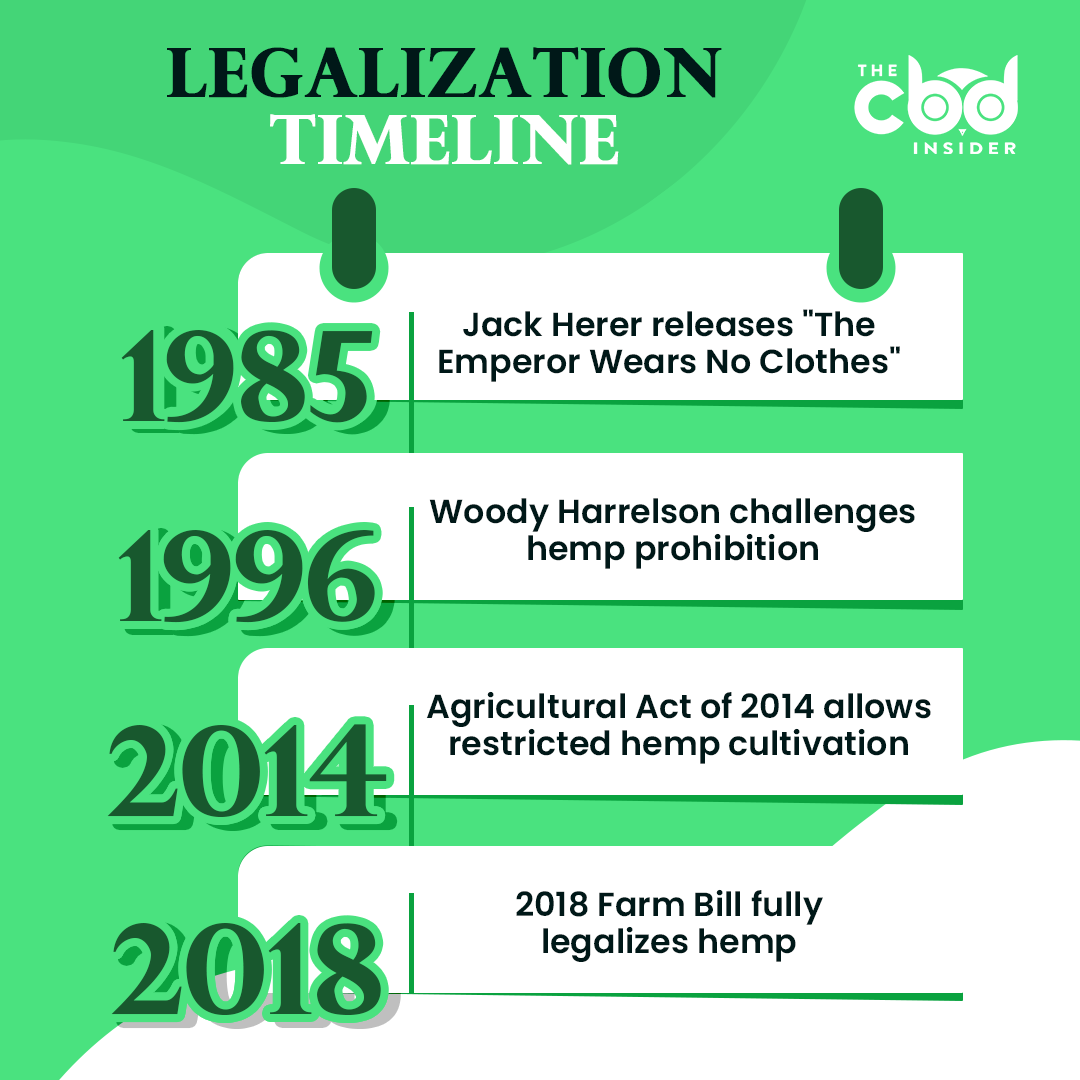
Starting the Path Back to Legalization
The beginning of the movement to bring back hemp is credited by some to Jack Herer and his 1985 book “The Emperor Wears No Clothes.”
Herer’s work argues hemp can be used for clothing, textiles, energy, paper, construction, and cleansing the environment.
The book has been lauded as the foundation for the hemp resurgence and is often cited in support of legalization for both hemp and marijuana.
Some activists owe their passion for hemp to Herer, including actor Woody Harrelson.
In 1996, Harrelson decided he would challenge the hemp prohibition.
The Cheers star planned to plant four hemp seeds in Beattyville, Kentucky—the state that once was the country’s leading producer of hemp—and bring along national media.
Once he planted the seeds, Harrelson was arrested. He was released on bond the same day and later acquitted by a jury.
While the publicity stunt was silly, it did show the nation that interest in hemp legalization existed.
Aside from celebrity endorsements, hemp legalization was also widely propagated with the evolution of the internet.
As the internet made information more accessible, it piqued public interest in healthy living and preserving the environment, two areas where hemp has great value.
Rise of the Wellness Industry
Hemp has become a popular alternative source of food and therapeutic benefit in the last few years, but the trend toward health-based food and medicine started almost two decades ago.
An article from 2010 by FoodNavigator-USA, a news and analysis site on the food and beverage industry, says the average American household has continued moving towards unconventional means for treating and preventing disease, consistent with data since 2000.
In response, foods like hemp protein and therapeutic products containing CBD have increased and are leading factors of growth in the hemp industry.
In 2017, the hemp industry hit $820 million in sales, with wellness-related goods such as hemp-derived CBD, food, and personal care products making up 62% of that total.
Environmental Protection
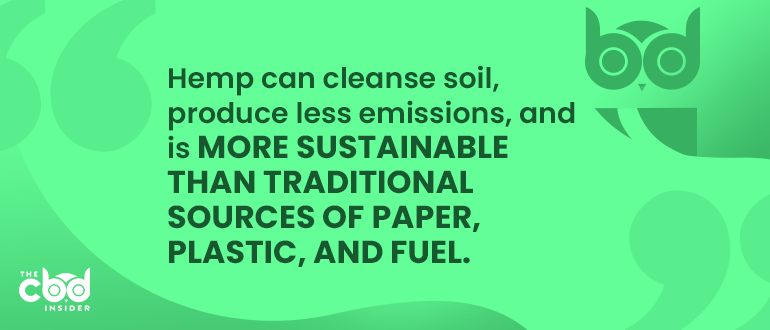
The heightened interest in protecting the earth also contributed to the reemergence of hemp.
People came to learn that hemp can cleanse soil, produce less emissions, and is more sustainable than traditional sources of paper, plastic, and fuel.
However, for hemp to be used in any of these industries, it had to be imported because of the Controlled Substances Act (CSA).
As a result, the US could not fully reap the environmental benefits hemp provided.
Legislation
In 2013, legislators began to take action in support of hemp.
After the House passed their version of the 2014 Farm Bill, Senators Ron Wyden (D-OR), Rand Paul (R-KY), Jeff Merkley (D-OR), and Minority Leader Mitch McConnell (R-KY) introduced a provision to allow the cultivation of hemp under state pilot programs.
According to the National Conference of State Legislatures, at least 39 states have legalized the cultivation of hemp since 2014.
In June 2018, with the 2014 legislation expiring at the end of September, Senator McConnell introduced a bill to the Senate’s version of the 2018 Farm Bill that federally legalized hemp and removed it from the CSA.
The 2018 bill was signed into law on December 20, 2018, with the hemp provisions included, fully legalizing hemp.
Hemp’s Value Is Recognized Again
Since the removal of restrictions in 2014, the awareness of the benefits of hemp has grown drastically.
Consequently, as people desire to protect the environment and enhance human health, some of those involved in the paper, plastic, biofuel, and health industries realize hemp may be an effective solution to achieving both of those goals.
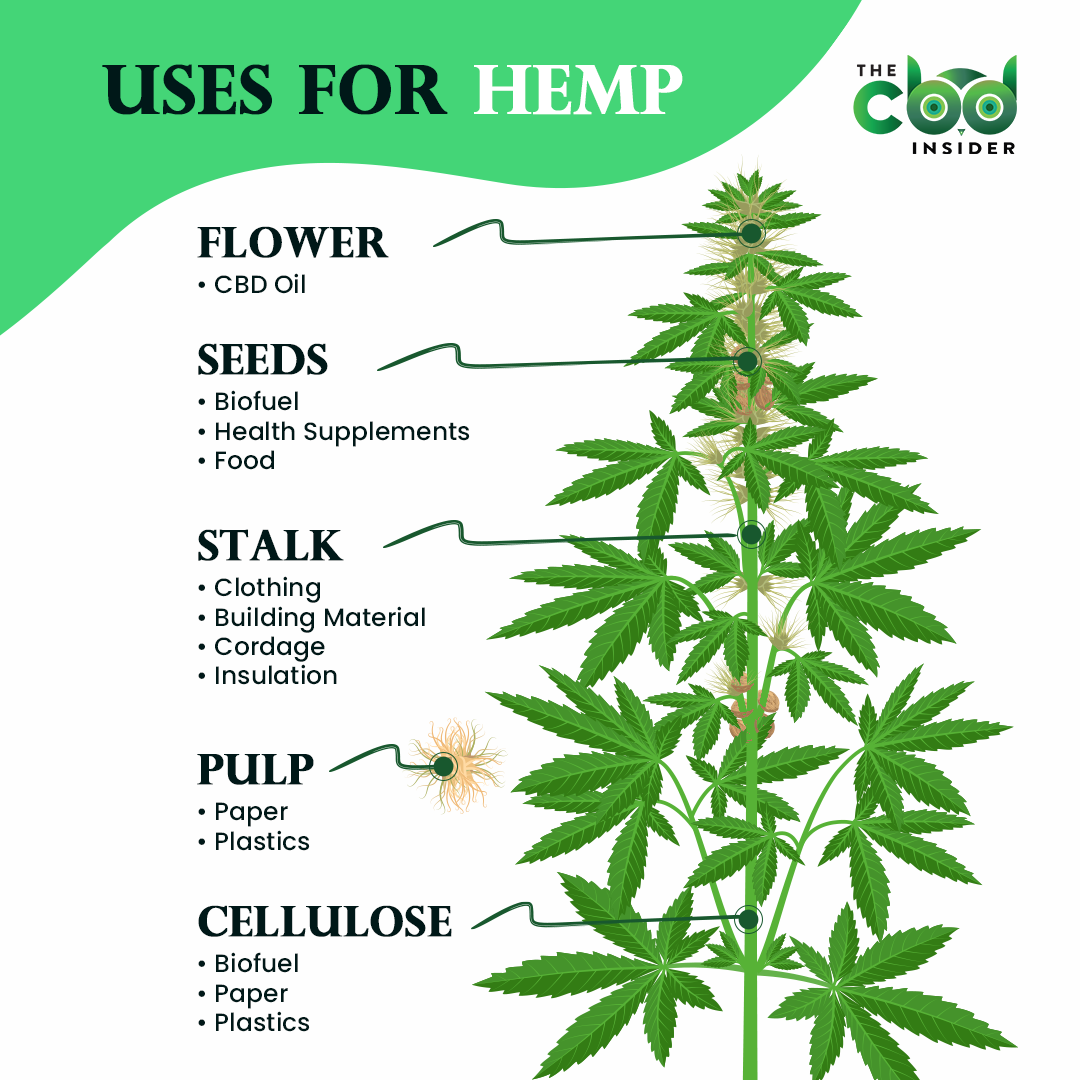
Hemp Pulp Used for Papermaking
Hemp pulp is currently used in specialty paper, such as for cigarette paper, packaging paper, coffee filters, tea bags, and other various items.
According to a 1994 article in the Journal of the International Hemp Association, the amount of hemp pulp needed for these purposes is minuscule compared to wood pulp, which is the main source of pulp in commercial writing and printing paper (120,000 tons of hemp pulp were produced for paper worldwide at the time; a single wood pulp mill produced no less than 250,000 tons per year).
Some significant obstacles stand in the way of hemp being used as a source for large scale production.
The special uses for hemp drastically raise its price, making it too expensive to produce hemp paper commercially.
Additionally, technology to produce hemp pulp is not up to date to compete with wood pulp production.
However, with the passing of the 2018 Farm Bill, the technology is bound to begin catching up.
In fact, it’s already begun to.
PureHemp Technology, a Colorado-based hemp technology company, has created a Continuous Countercurrent Reactor (CCR) that will be operational in 2019 and is planned to produce 4 tons of hemp pulp per day.
The CCR moves solid plant material one way while the liquid reagent moves the opposite direction, effectively removing the extract liquor from the solid material.
By 2021, the company plans to create a CCR producing 40 tons of hemp pulp per day.
Environmental Motivation
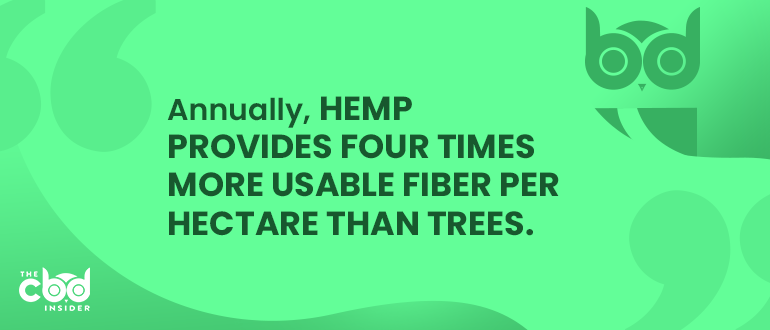
The move to hemp-based paper could potentially have environmental benefits.
Annually, hemp provides four times more usable fiber per hectare than trees, which require several years to grow and substantially more land.
If the technology were to catch up eventually, and enough hemp could be produced at a reasonable cost, this source of papermaking could save countless trees.
Hemp Cellulose Is Finding Its Way Into Plastic and Fuel
Hemp cellulose can be used for several applications, but most prominently for plastic composites and biofuel.
Plastic Composite
While Henry Ford’s expectations for the future of cellulose-based automobiles have not yet come to fruition, it seems to be moving that way.
Inspired by Ford’s prototype, Bruce Dietzen of Florida completed his own contemporary hemp car that was featured by New York Post in 2016. The vehicle body consists of 100 pounds of woven hemp.
It seems hemp cellulose fibers are increasingly finding their way into plastic composites for cars.
Some car brands, like BMW and Porsche, have decided to use hemp in some of their body panels, such as for the composite in the doors.
As research and technology progress, it seems likely that manufacturers will increase the role of hemp in producing vehicle parts.
Biofuel
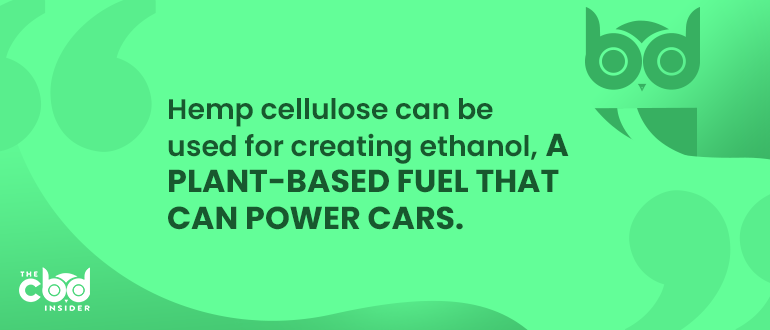
Hemp cellulose can also be used for creating ethanol, a plant-based fuel that can power cars.
The benefits of using ethanol from cellulose include minimizing the nation’s reliance on fossil fuels and reducing greenhouse gas emissions by up to 108% when compared with gasoline.
However, ethanol is currently produced mostly from corn, which is an inefficient source and decreases the available food supply.
Using corn as fuel has driven up corn prices and ironically caused environmental harm since forests have been destroyed to create land for these fuel crops.
According to a manuscript in the Indiana International & Comparative Law Review journal, the United States understands corn is not the solution and wants to find a new, non-food biofuel source.
The same manuscript argues that industrial hemp should be that source.
Hemp is earth’s number one source of biomass—the plant produces 10 tons of cellulose per acre—and has 100% more cellulose than other options under investigation by the government.
Aside from its efficiency, growing hemp can also actively heal the environment because of its phytoremediation properties (i.e., cleansing the soil of toxins).
Dietzen’s hemp car runs on ethanol, presumably from cellulose, and he pushes for cellulosic ethanol to become the next major player in the fuel industry.
Some states in the US have already realized its potential, like the Indiana Department of Agriculture:
“The Midwest really can be the Middle East of biofuels. … Beyond the use of traditional grain for ethanol, Indiana will strive to be a leader in cellulosic ethanol. Cellulosic is the future of biofuels and can be maximized by Indiana’s research universities like Purdue.”
With the full legalization of hemp, it’s likely that much of the plant’s cellulose could be used for biofuel.
Hemp-Derived CBD
As of late, hemp has become most prominently known for producing the increasingly popular health and wellness substance, cannabidiol (CBD).
CBD has a wide range of potential benefits, including anti-inflammatory activity, neuroprotectant properties (e.g., reducing seizures), anti-anxiety effects, and more.
Hemp is generally rich in CBD while being low in THC, which is one of its distinctions from marijuana.
CBD is most concentrated in the hemp flower, while it can also be found in the plant’s leaves and stalk to a lesser extent.
Hemp legalization has been celebrated across the CBD industry as supply for the cannabinoid and research about it should drastically increase.
The Future Outlook on Hemp is Bright and Multi-Faceted
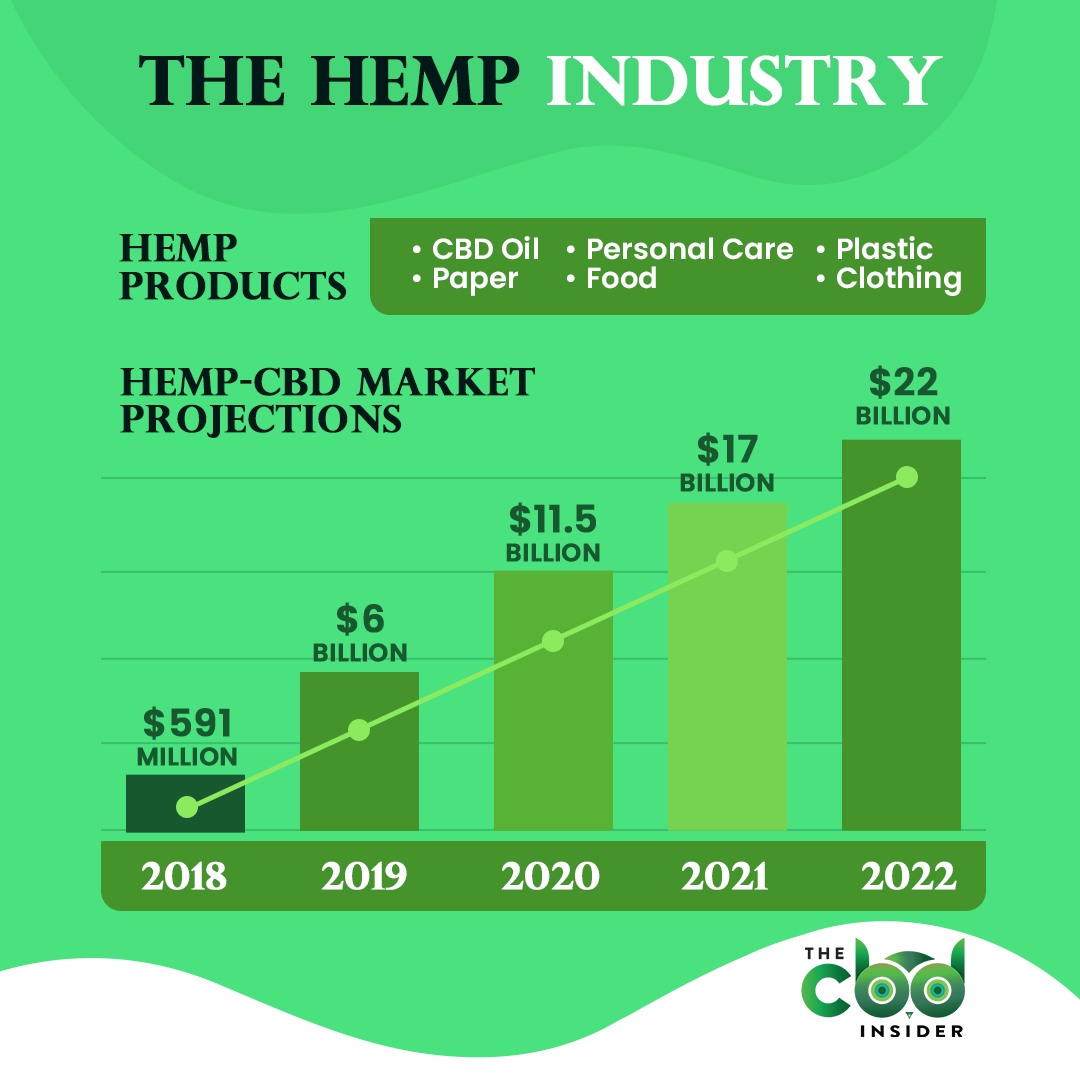
Market reports and experts alike predict that as hemp’s wide range of uses is becoming more well-known, its future grows brighter as well.
Usefulness
Currently, CBD is the most popular use for hemp right now; however, hemp can benefit humanity in countless more ways.
As mentioned earlier, hemp is already being used in paper, plastics, and biofuel.
In addition to those, the plant may even find its way into bricks, insulation using hemp hurds (pieces of the woody, inner portion of the hemp stalk), animal feed, and bug repellant items.
Market Projections
While hemp has more than 25,000 potential uses, CBD is driving the high projections for the industrial hemp market.
Brightfield Group, a CBD market analysis provider, released a report in September 2018 estimating that the hemp-derived CBD industry will reach more than $5 billion in 2019, and hit $22 billion by 2022.
In 2018, the industry is expected to post just under $600 million, meaning the market is expected to grow nearly 40 times larger in only 4 years.
The report believes CBD products will end up on the shelves of major retailers in the United States, opening the industry to wholesale opportunities. Interest seems to exist already, as Target once sold CBD products from Charlotte’s Web in 2017.
The 2018 Farm Bill also helps this projection since hemp companies will now have access to banks, insurance, and likely see increased investor capital now that hemp is fully legal.
Time Will Tell
Only time will tell if the market will meet the lofty estimates set for it, but the demand for hemp products is undoubtedly growing.
Technology and research in the US must make up for lost time, but with the motivation for healthy living, a desire to protect the environment, and recent legalization, they soon will.
With all of this positive momentum behind hemp, the industry is riding high and shows no signs of slowing down.



